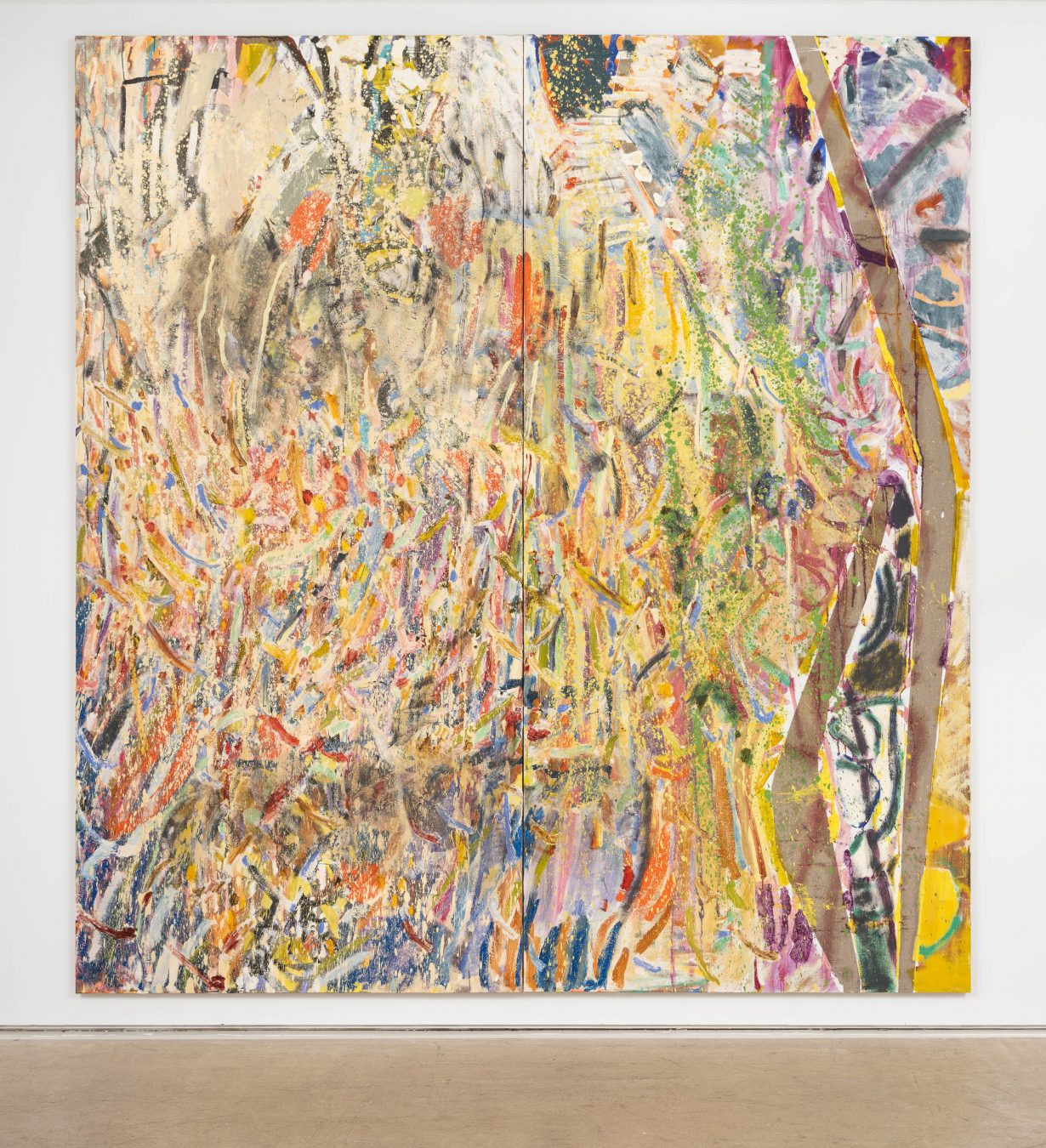In A Handful of Dust at Pace, London, the artist transforms particles of pigment into vast, vigorously worked abstract canvases
In Joseph Conrad’s short story ‘Youth’ (1898), the ageing narrator recalls his twenties, when he experienced ‘the feeling that will never come back… the heat of life in the handful of dust’ that made up his then seemingly immortal body, and ‘the glow in the heart that with every year grows dim’. We might wonder whether this passage inspired the twenty-seven-year-old British painter Pam Evelyn to name her solo exhibition A Handful of Dust (the phrase also appears in T.S. Eliot’s 1922 poem The Waste Land, and served as the title of a 1934 novel by Evelyn Waugh). If Conrad was her source, then his words speak eloquently to how she transforms particles of pigment into vast, vigorously worked abstract canvases, which brim and burst with painterly joie de vivre.
While Evelyn is alert to the history of her medium – these paintings draw lessons from figures including Chaïm Soutine, Karel Appel and Leon Kossoff – there’s little sense that she’s attempting to formulate what more self-conscious (and self-defensive) painters might term a ‘position’. Rather, she seems content to discover where her paint will lead her. Given Evelyn’s abundant technical gifts, her sure sense of atmosphere and her youth, this is – for now at least – all to the good.

Deluge (2023) is Evelyn at her most diffuse. Much of the picture plane is a dense squall of bright, primary coloured brushmarks, which rain down like tickertape against a dark, bruised-looking ground. Spatters of frog-green paint add to the blustery chaos, and the closest thing we get to form is two long boomerang-shaped sections of raw, plum-stained canvas, on the far right of the work. These do not frame Deluge’s excessive pictorial energies, but rather ride them, like gusts of wind or cresting waves. Traced Train Windows (2023) is similarly restless. As its title suggests, the painting recalls the experience of travelling in a railway carriage, and watching the landscape outside speed by through a grease-smeared pane of glass, its features blurring into streaks of colour and vague, amorphous shapes. If one of Evelyn’s concerns is how time and motion inflect our sense of perception, then Mirage – A Glaze of Mischief (2023) might be interpreted as an attempt to translate a fleeting, weightless phenomenon, a sudden spill of light, into the permanence of heavy, impasto paint. Raking luminescent brushstrokes fan out from the top of the canvas, before appearing to snag, bend and splinter. The result resembles a flash-frozen waterfall.
The triptych Hidden Scene (2022), which at first glance appears to depict a brooding forest, is the closest Evelyn gets to figuration. Here, long treelike strips of raw canvas, licked with thin black marks, are glued onto the work’s surface, largely obscuring a kaleidoscopic abstract composition, in which fields of chalky blues and pinks are juxtaposed with pooling yellows and reds. Given how Evelyn’s paintings often push everything to the foreground, it’s intriguing to see her holding so much back. Whatever secrets lurk in the dark wood of Hidden Scene, I suspect they may, in time, prove crucial to her work.
A Handful of Dust at Pace, London, 6–30 September
